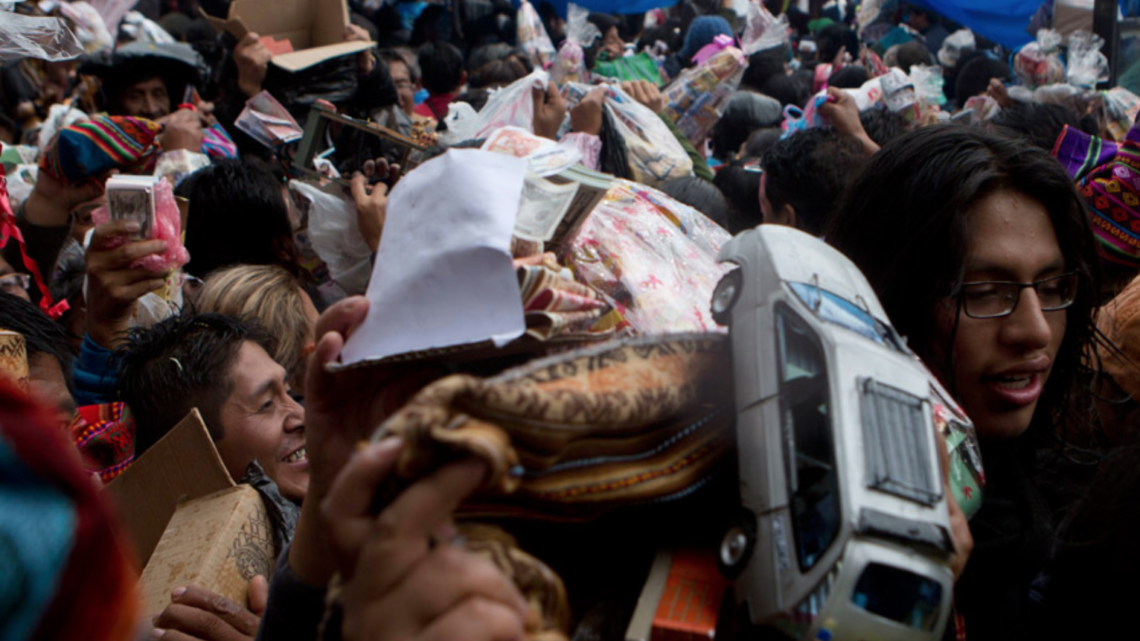Abundance Fantasies: The Alasitas Pathway
March 7, 2014
From an early age the miniature teaches us to want. During childhood toys in all sorts and shapes create the pathways for a grown-up desire for material abundance. The promise is right there, in the palm of your hand: toy cars, doll’s houses, miniature cattle and food. And in the mind it materialises into the real thing. We call this projection of big desire on a small object the Alasitas Pathway. During the Alasitas Festival in Bolivia people present each other with small items that symbolise specific desirable goods such as mobile telephones, foods, cars, homes, iPad’s, and other consumer goods. It is popular belief that, through divine intervention, the recipient of such miniatures gets the real object in the course of the following year.
Perhaps our pathways of desire are constructed as an unconscious response to the difference “in size” between the symbolic and the real. Perhaps through redesign of early age experiences of abundance we can culturally inject structures of desire that are less harmful to the environment. Lovers of model trains and tourist souvenirs on the one hand and the giant vegetable growers and cargo cults on the other hand, may display valuable size-related desire patterns that could inspire such reductive reprogramming. If we manage to direct newly acquired patterns of desire onto the human body and start to want to shrink ourselves, as The Incredible Shrinking Man envisions, we will need less and therefor we’ll have more.